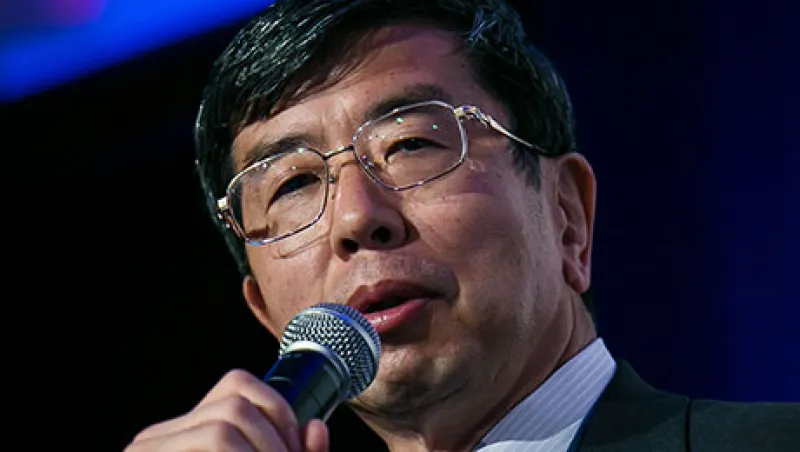The world has massive infrastructure needs and a big financing gap, so fresh sources of funding should be welcome, right? Not in the world of development banks, where geopolitical concerns and institutional rivalries are stirring tensions.
At the G-20 meeting in Brisbane, Australia, in November, the world’s leading multilateral development banks issued a rare and unusual joint statement warning against a possible dilution in the “quality of spending” with the entry of new, cash-rich lenders in the field of infrastructure investment in developing nations.
The statement did not name names, but it did not need to. It came less than three weeks after China had enlisted more than a score of developing and emerging economies to join a new Asian Infrastructure Investment Bank (AIIB), and just a few months after Beijing had agreed with its fellow BRICS nations — Brazil, Russia, India and South Africa — to form the New Development Bank (NDB) with $50 billion in capital. Both institutions bring new resources to the global infrastructure game. They also represent a challenge to the U.S. and its G-7 partners, which for decades have used multilateral lenders to extend their own influence.
These two new lenders are owned by emerging nations that together hold more than a half of the world’s $12 trillion in foreign exchange reserves and have the ability to bankroll multibillion dollar projects. Earlier this year both Jim Yong Kim, president of the World Bank, and Takehiko Nakao, president of the Asian Development Bank, had expressed a willingness to work with the two new lenders, provided they adhered to certain safeguards and standards, which both of the new institutions have said they would do.
But in Brisbane the World Bank and the ADB teamed up with six other international agencies — the African Development Bank, the European Bank for Reconstruction and Development, the European Investment Bank, the Inter-American Development Bank, the Islamic Development Bank and the International Monetary Fund — and adopted a critical tone toward the new players. “Just as important as the quantity of spending is the quality of infrastructure spending,” the lenders’ statement said. The ADB’s Independent Evaluation unit has weighed in by saying there was a danger of social and environmental protections being “diluted” by the entry of the new development banks, and even by the fact that the World Bank was considering a more “flexible” approach to its policy on safeguards.
The AIIB has promised to follow “best international practices” in terms of observing environmental safeguards and governance standards in the granting of loans, notes Masahiro Kawai, a former senior Japanese Finance Ministry official and former dean of the Asian Development Bank Institute, the bank’s research and training arm. Yet senior Chinese officials involved in the AIIB initiative have argued, as Kawai says, that the ADB and the World Bank “spend too much time on prelending procedures and checks, and are inefficient.”
There is a clear trade-off between efficiency and following existing norms on social, environmental and governance standards, Kawai says. “My interpretation is that the AIIB is not going to follow the same procedures as the ADB or the World Bank, so their projects may undercut ADB and the World Bank projects,” he says. “They may provide more attractive deals to potential borrowers, so they may become more competitive.” He calls that “a potential problem.”
China signaled its readiness to challenge the existing players at the October signing in Beijing of the agreement to establish the AIIB. Finance minister Lou Jiwei has fired a broadside against the ADB, the World Bank and others, saying that the AIIB would set high standards and safeguards in its lending while avoiding “bureaucratic, unrealistic and irrelevant policies,” according to China’s Xinhua News Agency. Such policies, he said, mean that infrastructure projects typically face delays of six or seven years before they can hope to satisfy myriad environmental, social, health and other safeguards and standards.
The differences over standards are aggravated by political rivalries. China has long felt alienated by Japan’s dominance of the ADB and is looking to exert its influence more widely. Japan is an equal shareholder with the U.S. in the Manila-based bank and has held its presidency of the ADB since its founding. Beijing has also chafed at U.S. dominance of the IMF and World Bank and its refusal to support governance reforms at both institutions that would give a greater voice and vote to emerging economic powers. That frustration is widely shared. Christine Lagarde, the IMF managing director, said on December 12 that the fund would explore other avenues for change after the Obama administration declined to seek congressional approval for reforms it had agreed to in 2010.
Meanwhile, Washington reportedly lobbied hard to persuade advanced economies, including European nations and Australia, to decline offers of membership of the AIIB. Even so, 21 nations signed up as charter members of the bank in October: Bangladesh, Brunei, Cambodia, China, India, Kazakhstan, Kuwait, Laos, Malaysia, Mongolia, Myanmar, Nepal, Oman, Pakistan, the Philippines, Qatar, Singapore, Sri Lanka, Thailand, Uzbekistan and Vietnam. In late November Indonesia signed a memorandum of understanding to join as well. The bank will have initial capital of $50 billion, of which 20 percent will be paid in; the signatories authorized capital to grow to as much as $100 billion, compared with the ADB’s $175 billion.
The AIIB “is an open, inclusive institution,” Lou said at the bank’s launch in Beijing. “We believe there will be more countries joining it in the future.”
Voting rights at the AIIB are expected to be based upon a combination of gross domestic product and purchasing power parity calculations. Under such a formula, India would be the second-largest shareholder, after China.
The seven big multilateral development banks spend more than $130 billion a year on infrastructure financing in developing and emerging economies. Yet by their own admission, developing countries face an infrastructure funding gap “in excess of $1 trillion per annum.”






